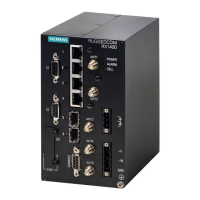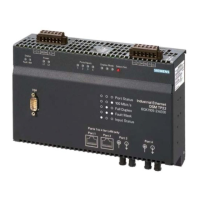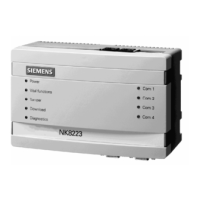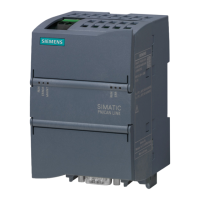RUGGEDCOM ROX II
CLI User Guide
Chapter 12
Tunneling and VPNs
Configuring DMVPN 431
Section12.10.2
Configuring DMVPN
To configure the device to act as a spoke in a hub-and-spoke network, do the following:
NOTE
RUGGEDCOM ROX II supports connections with up to two hubs.
1. Determine the static IP address of the hub router.
2. Configure a GRE tunnel to the hub. For more information, refer to Section12.7.3, “Adding a GRE Tunnel”.
3. Configure IPsec for the GRE tunnel, making sure the connection name matches the name of the GRE interface
(e.g. gre-t1). For more information, refer to Section12.8.2, “Configuring IPsec Tunnels”.
4. Configure a BGP route for the GRE tunnel. For more information, refer to Section13.8.1, “Configuring BGP”.
5. Enable the DMVPN service by typing:
services nhrp enabled
NOTE
RUGGEDCOM ROX II supports up to two DMVPN interfaces, each of which can be assigned to
different GRE tunnels.
6. Configure a DMVPN interface for each GRE tunnel. For more information, refer to Section12.10.3.2, “Adding
a DMVPN Interface”.
7. Configure an IPsec/GRE tunnel from the hub to the device, using the IP address defined for the device's
DMVPN interface.
8. Verify the status of the DMVPN connection. For more information, refer to Section12.10.4, “Viewing the
Status of DMVPN”.
Section12.10.3
Managing DMVPN Interfaces
Configure a DMVPN interface to connect with a host. Up to two interfaces can be configured, allowing the device
to connect with two hubs.
CONTENTS
• Section12.10.3.1, “Viewing a List of DMVPN Interfaces”
• Section12.10.3.2, “Adding a DMVPN Interface”
• Section12.10.3.3, “Deleting a DMVPN Interface”
Section12.10.3.1
Viewing a List of DMVPN Interfaces
To view a DMVPN interfaces, type:
show running-config services nrhp interface-nhrp
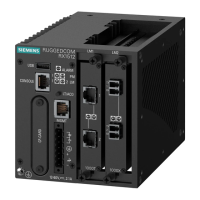
